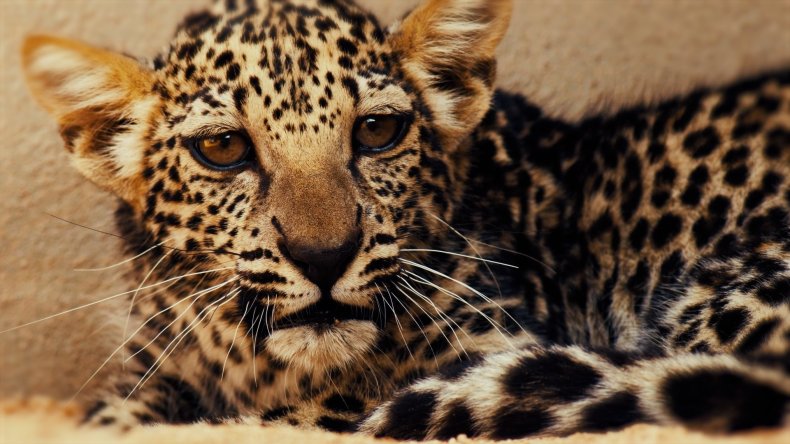Rare Newborn Arabian Leopard Cub Could Help Save Endangered Species
Saudi Arabian officials have reported the birth of a rare Arabian leopard cub, a critically endangered subspecies of the big cat.
The female cub was was born on April 23 at the Arabian Leopard Breeding Center in Taif, Saudi Arabia, the Royal Commission for AlUla (RCU) which operates the facility, announced.
AlUla is an area in northwest Saudi Arabia, located around 680 miles from the capital Riyadh, that contains the country's first UNESCO World Heritage Site and spectacular natural landscapes.
The leopard is now one of 16 cubs that have been born as part of a captive-breeding program at the breeding center.
After centuries of habitat loss and poaching, the wild Arabian leopard population likely numbers fewer than 200. The animal, which is found only in the Arabian Peninsula, is smaller than all other leopard subspecies.
In 1996, the International Union for Conservation of Nature, listed the subspecies as "Critically Endangered," a classification that has remained to this day. This means the big cat is thought to be at extremely high risk of extinction in the wild.
Conservationists hope the birth of the latest cub provides a chance to revive the critically endangered species.
Ahmed Almalki, Nature Reserves director at the RCU, said in a statement: "This birth is significant because it is one step further toward reviving the Arabian leopard. We believe that saving endangered species such as the Arabian Leopard is critical to the protection of our planet and the natural balance of our ecosystem. Our goal at RCU is nothing less than to restore the power of nature's balance."
The Arabian leopard has long held a special place in the imagination of the people living in the region, even appearing on ancient rock art.
Conservationists are hoping to reintroduce leopards that have been born as part of the breeding program into the mountains of AlUla, reviving the wild population.
As part of the conservation initiatives, a state-of-the-art breeding center is scheduled to open by early 2024. New nature reserves will also be created in the AlUla region and prey species, such as the Nubian ibex and Idmi gazelles, will be reintroduced to certain areas.
AlUla is home to Hegra, Saudi Arabia's first UNESCO World Heritage Site. The ancient site, much of which dates back to the 1st century A.D., spans 52-hecates and contains nearly 100 well-preserved tombs with elaborate facades cut into the outcrops of sandstone.
The city was once the southernmost settlement of the Nabataean Kingdom, whose capital city was Petra—a famous archaeological site in modern day Jordan.


